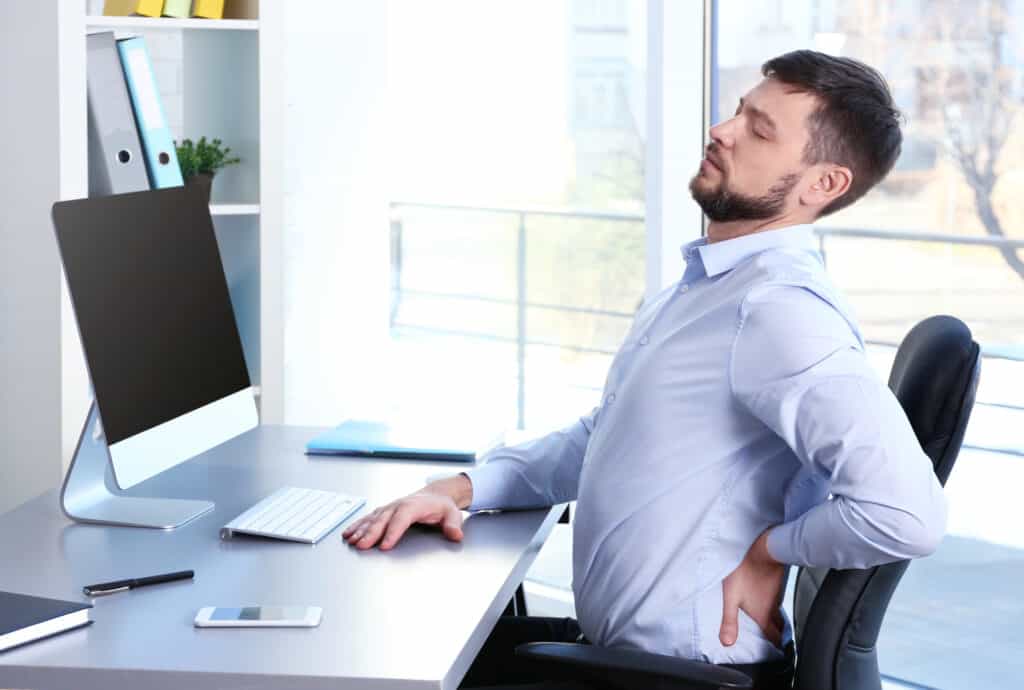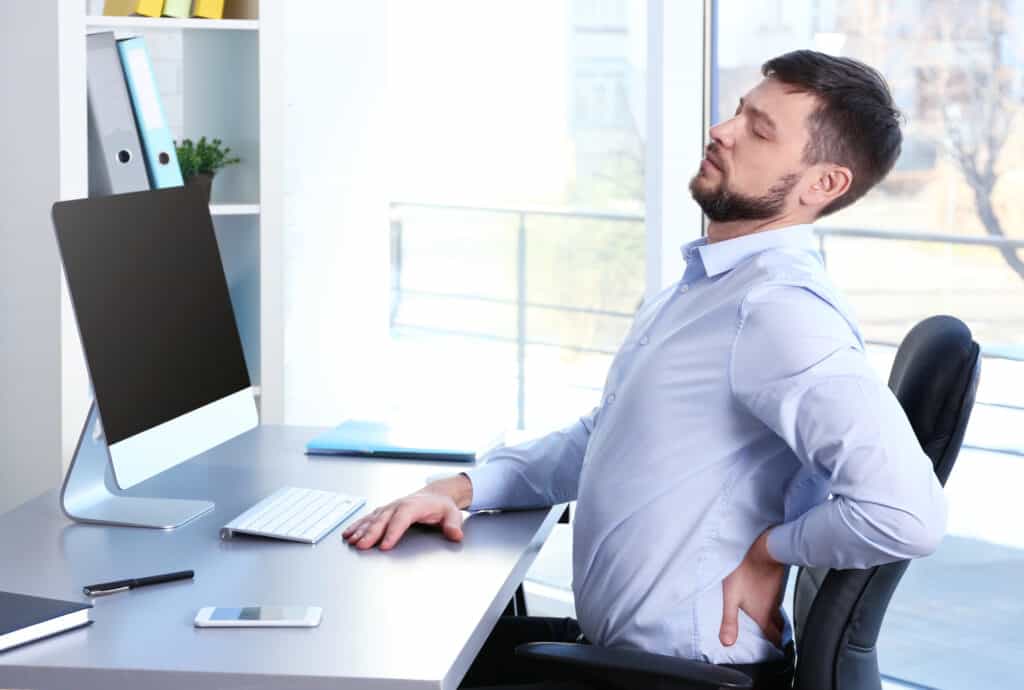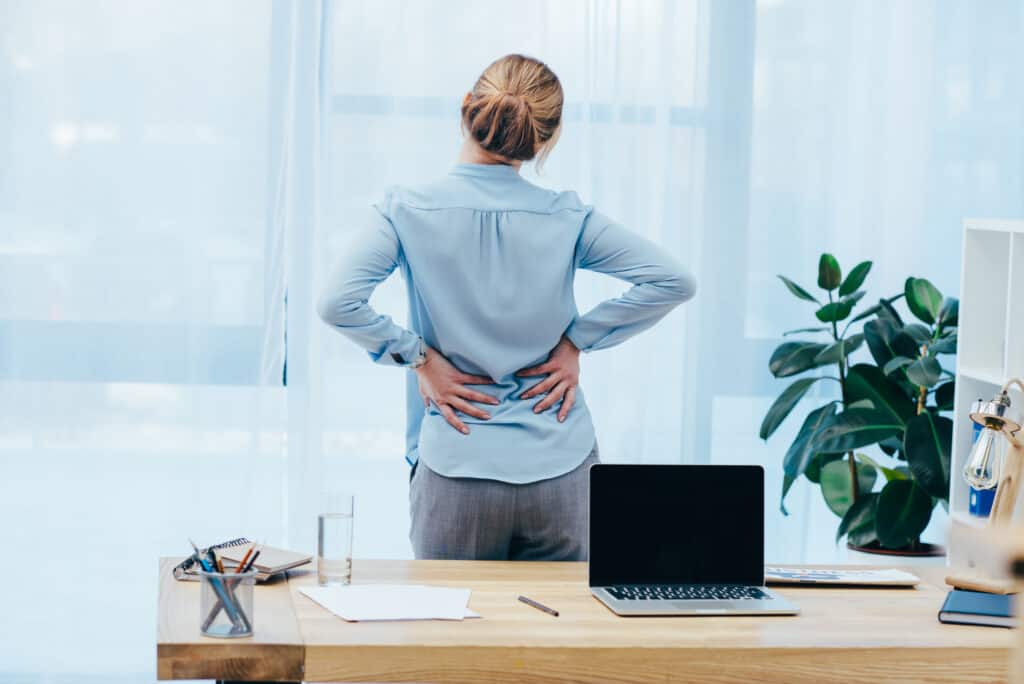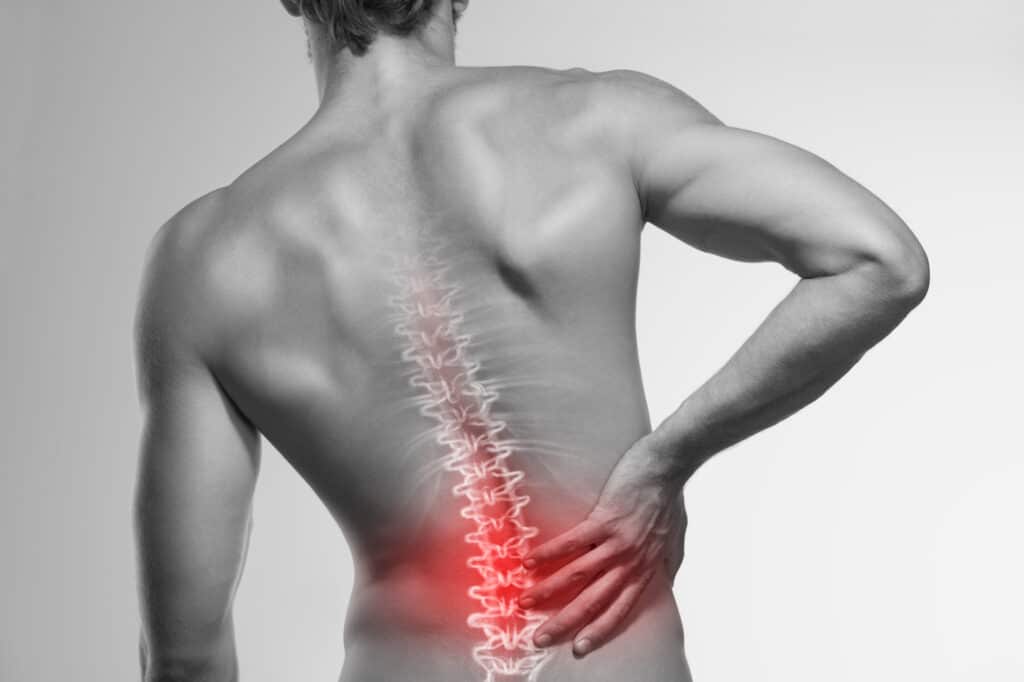
Do you suffer from chronic lower back pain?
Are you tired of feeling constant pain?
You're not alone – shockingly, 1 in 6 Australians suffers from back problems.
Multiple factors can contribute to lower back pain, from poor posture to muscle strains and herniated discs. It’s one of the most common reasons why adults seek medical help.
But if you're looking for a more natural way to manage your discomfort, there are plenty of ways to tackle the issue without relying on medications or invasive surgical procedures.
More Blogs From Osteoworks
What Exactly Is Arthritis, And Can I Get Help?
Thoracic Mobility is so Easy to Improve
Neck Mobility Exercises for a Tight Neck
Identifying The Problem

Lower back pain is a giant pain in the lower “back” – that affects everything from your social life and relationships to your ability to do your job properly.
But identifying what type of lower back pain you're experiencing can help you and your healthcare provider find the best treatment plan – whether that’s us, a physical therapist or a medical doctor.
Is it a dull ache that comes and goes?
Or maybe a sharp pain that shoots down your leg?
Stiffness that never goes away?
Whatever the case, taking a moment to assess and identify the type of lower back pain you're experiencing can make all the difference in finding long-term relief.
Have you ever tried to solve a problem without knowing its root cause?
It's like trying to put out a fire without knowing where it started.
That’s why understanding the root cause of low back pain is crucial in finding a solution that will have a long-lasting effect. The same goes for reducing a problem.
Reducing it is only effective if you know what's causing it, whether it's a personal or global issue.
It may take some digging, but once we identify the root cause, we can start implementing solutions that address the problem at its core instead of just slapping on a band-aid.
We prefer to tackle the root cause – then take meaningful steps to fix it. So, let's dive in and explore the different types of lower back pain.
The lower back is an intricate web of muscles, ligaments, and bones that work together to provide the body stability, strength, and flexibility.
Unfortunately, lower back pain is a common issue affecting millions worldwide.
But understanding the anatomy of the lower back and the various causes of pain can help you take proactive steps to prevent injury and alleviate discomfort.
Acute lower back pain:
Acute pain usually occurs suddenly - often after an accident or injury affecting the lower back.
Acute pain is most likely to last for a couple of days to a few weeks, resolving when the body heals the injury.
Subacute lower back pain:
Like acute pain, subacute pain comes on suddenly, and it is much shorter lasting.
Taking a little longer to resolve than acute pain, subacute lower back pain will usually get better within three months.
Transient lower back pain:
Unlike acute and subacute pain that tends to be constant until the body heals the injury, transient pain is much more "transient" – sometimes only lasting for a few minutes.
The type of pain is likely to be brought on by specific activities or positions – such as sitting or standing for long periods. But it can predict more serious lower back problems in the future.
Chronic lower back pain:
We describe the pain as chronic when it lasts for three months or longer, but often people with chronic lower back pain have been carrying the same pain around for months, years, and in some cases, decades – with doctors telling them there is nothing they can do to fix it.
Chronic lower back pain and the prevention of this type of pain are where osteopathy can make the biggest difference to patients' quality of life.
What Can I Do To Fix Lower Back Pain?

You can do some things at home to reduce and prevent lower back pain (see below).
If you try some of these suggestions, but the pain persists, and you've been experiencing lower back pain or discomfort for a while, and you're quite sure what's going on, it's time to seek professional help.
Stretch and strengthen your lower back muscles:
If you spend most of your day sitting, you'll likely experience lower back pain. It's a common issue that many men and women face, but there are ways to alleviate that discomfort.
For example, stretching and strengthening your lower back muscles can improve your spine's health and overall health and well-being.
Incorporating exercises like bridges, planks, and pelvic tilts into your daily routine can help to minimize pain and prevent future injuries.
Additionally, incorporating stretches like knees-to-chest and spinal twists can increase flexibility and decrease tension in your lower back.
So next time you feel a little sore after a long day in the office, try some exercises and stretches.
Include natural anti-inflammatory compounds like ginger, turmeric, and omega-3 fatty acids in your diet:
Over-the-counter pain medications like paracetamol and Non-steroidal Anti-inflammatory drugs (NSAIDs) can help to ease lower back pain, but the results are temporary – only masking the pain.
Plus, they can have unpleasant side effects. But have you considered incorporating anti-inflammatory foods instead? Ginger, for example, has been shown to help with inflammation.
Turmeric also has powerful antioxidant and anti-inflammatory properties.
Incorporating these foods into your diet can help reduce the body-wide inflammation contributing to lower back pain.
Minimize Stress:
Life is difficult at times. Sometimes it’s impossible to reduce stress, but you can counteract the stresses and strains that life throws at us by engaging in meditation, mindfulness, or other practices that allow the body to relax, rest and repair.
Plus, in some cases, it is possible to reduce stress. What can you delegate? What can you start saying no to?
It might sound too simple, but making small changes to reduce your stress levels can have a profoundly positive effect on pain levels.
How Does Osteopathy Help With Lower Back Pain?

In many cases, it can be difficult to pinpoint the cause of lower back pain and finding an effective solution can be challenging.
Chronic lower back pain is one of the most frustrating and debilitating ailments. It can impact every aspect of your life, from work to hobbies to simply getting out of bed in the morning.
While many treatments are available for this type of pain, osteopathy has emerged as an effective option for those seeking long-term relief.
Osteopathy is an increasingly popular lower back pain treatment (even though it has been used to successfully treat the condition for more than 150 years).
Unlike other therapies focusing solely on symptom management, osteopathy aims to identify and address the root causes of chronic pain.
That's why it's unique because we move beyond medical diagnoses to recognize how chronic issues develop through lifestyle factors and proposes a solution that addresses both body and mind – a vital consideration when treating back pain.
So, if you are dealing with persistent lower back pain, osteopathy can potentially offer some relief.
But What Is Osteopathy, And How Does It Work?

Osteopathic treatment is a holistic approach to healthcare that focuses on the interconnectedness of the body's systems and the musculoskeletal system's role in maintaining overall health.
This form of treatment, performed by osteopathic physicians, uses hands-on manual techniques to diagnose and treat various conditions, such as chronic pain, migraines, and digestive issues.
One of the main benefits of osteopathic treatment is that it addresses underlying causes of lower back pain and does not just treat symptoms.
As practitioners, we also emphasize the importance of a healthy lifestyle, such as proper nutrition, exercise, and stress management, as integral to achieving and maintaining optimal health.
Osteopathic treatment is an especially beneficial way to treat lower back pain if you prefer a non-invasive, drug-free approach to healthcare.
We use a range of techniques to help alleviate your lower back discomfort. These techniques vary depending on you and your specific needs.
But they may include postural realignment, manual therapy, soft tissue massage, and spinal manipulation.
By working with your body's natural healing mechanisms, we help to restore balance and function to the affected areas, providing lasting relief from lower back pain.
The treatment can provide significant and lasting relief for lower back pain and other chronic ailments.
The holistic philosophy of listening to the body and understanding its underlying physiology makes it an especially attractive prospect if you want to take a proactive approach to your health.
So, whether you're dealing with lower back pain, chronic muscle soreness, TMJ pain, or many other physical issues, we can help restore balance and harmony throughout your body and enable it to heal itself.

